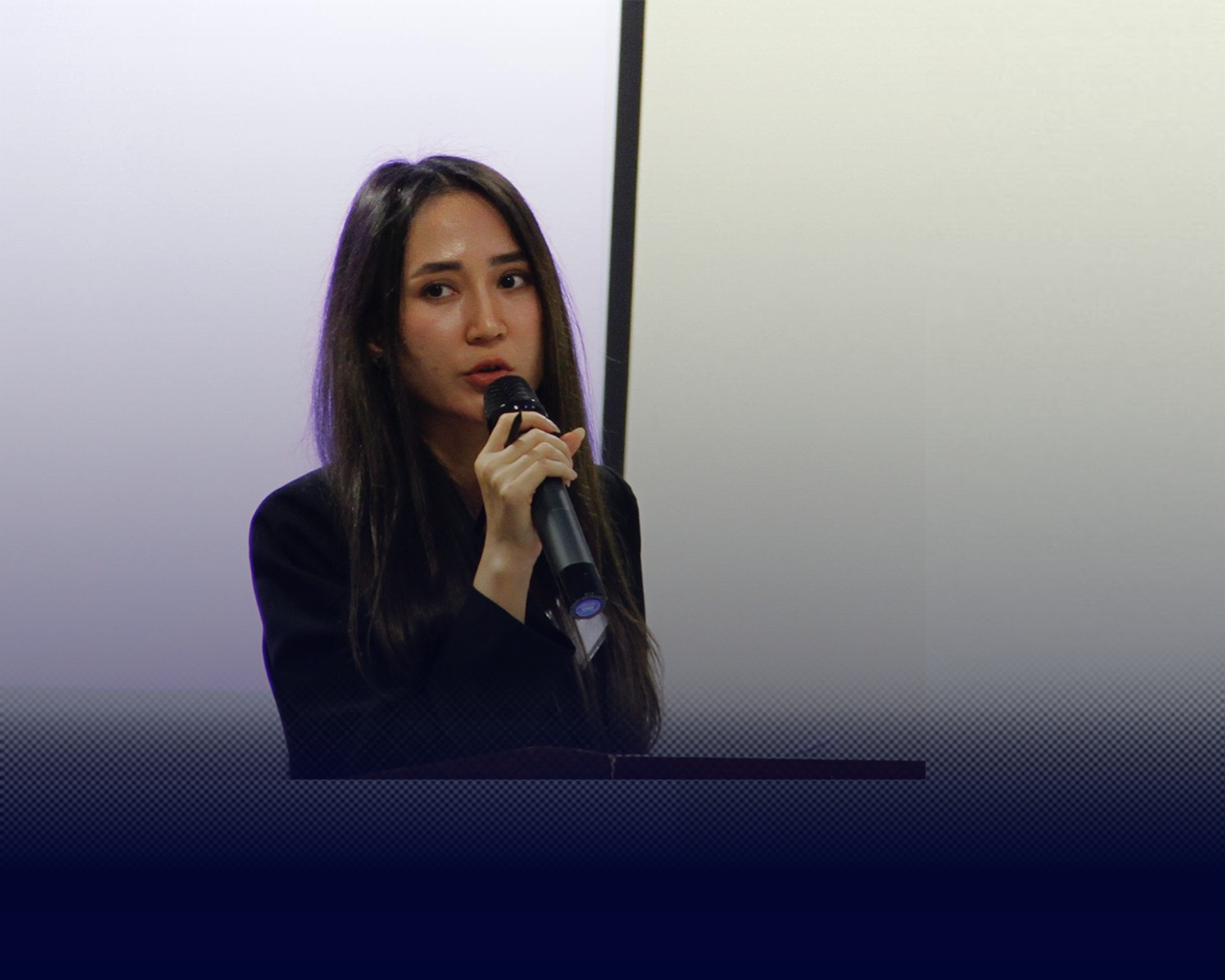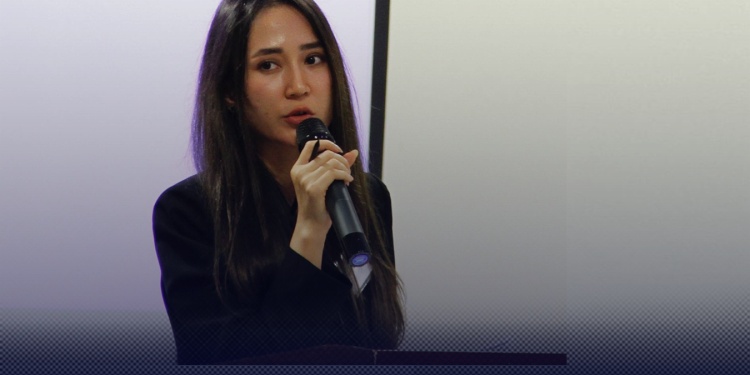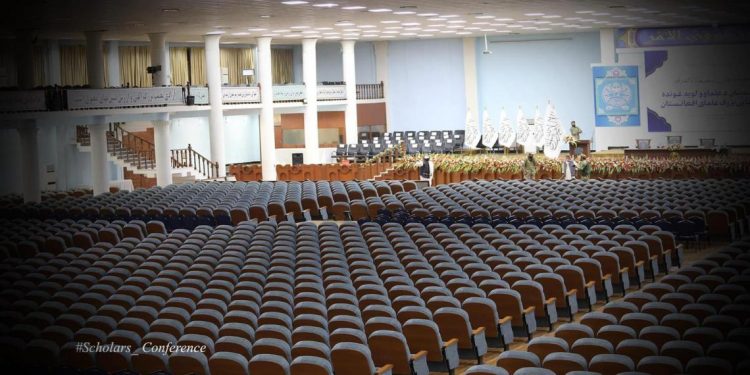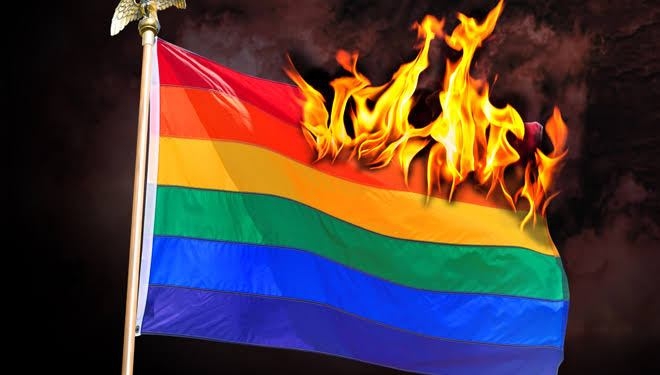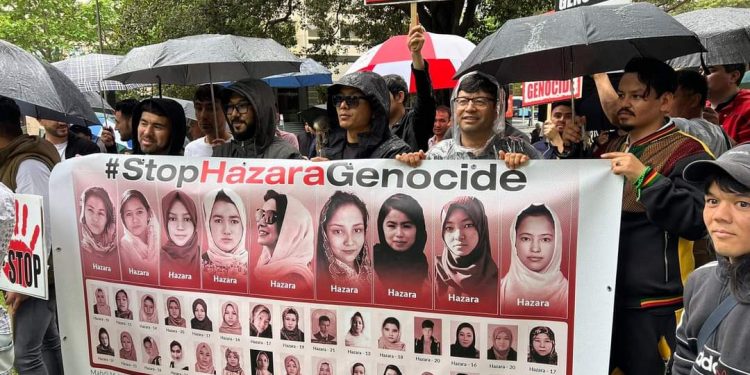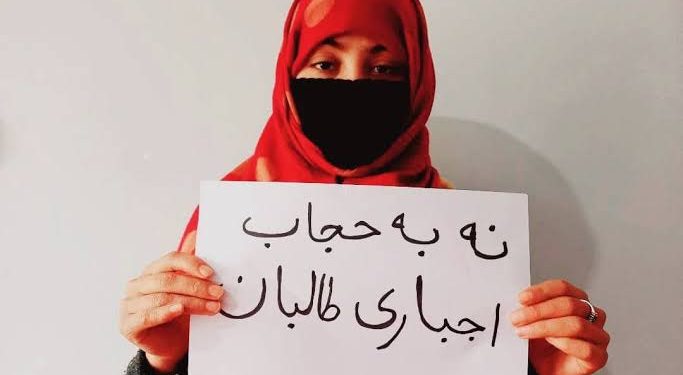Freshta Hemmati is a leading Afghan journalist and human-rights advocate who directs the Advocacy for Afghan Women project. Now in its second year, the initiative builds the capacity of women journalists and rights defenders inside and outside Afghanistan. Hemmati and her team provide training in leadership, advocacy, and digital security, while documenting the realities Afghan women face under Taliban rule. She has coordinated quarterly reports based on first-hand accounts from journalists across provinces, highlighting censorship, threats, labour-market collapse, and mental-health crises. Her work underscores both the resilience of Afghan women journalists and the urgent need for international solidarity.
In this in-depth interview with Scott Douglas Jacobsen, Freshta Hemmati discusses the findings of her latest report on Afghan women journalists living under Taliban rule. She outlines how censorship is near-total, with more than 90 percent of reporting compelled to fit Taliban narratives. Hemmati explains the threats journalists face, the restrictions imposed by the mahram system, critical shortages of equipment, and the collapse of institutional support. She stresses the severe mental-health toll, with journalists describing daily despair. Hemmati calls for urgent international solidarity, arguing that without sustained support and action, Afghanistan risks losing an entire generation of women journalists and its fragile press freedom.
Scott Douglas Jacobsen: Thank you for joining me today, Freshta. We have an extensive report covering restrictions, the threat landscape, labour-market collapse, digital security, and mental health—it is a wide range, so we are going to cover quite a bit. How often do you publish a report—annually or quarterly?
Freshta Hemmati: It depends on the projects we are running, but over the past two years, we have published every quarter, every three months.
Jacobsen: What prompted the first report that got the ball rolling?
Hemmati: First, a bit about the project that generated this research. It is called Advocacy for Afghan Women, now in its second year of implementation inside Afghanistan. The goal is to build the capacity of women journalists and human-rights defenders. Last year, we trained 100 Afghan journalists and human-rights defenders inside and outside the country. This year, we are training 80 women journalists. We maintain regular contact with them and run a series of capacity-building trainings on leadership and advocacy mechanisms. The data we are publishing comes from first-hand sources in Afghanistan—people in our network who are in weekly contact with us. We wanted to understand, with evidence, what the past four years have looked like for Afghan women in journalism. We have repeatedly seen talented women step back from the field they love. Restrictions have severe effects. Some leave journalism, change careers, or stop working due to family or security pressures. We felt there needed to be data and statistics documenting this reality. That is why we decided to publish the report.
Jacobsen: How did you recruit 101 respondents for a Google Form survey under those security constraints?
Hemmati: Through our active network. These are not passive contacts—we speak with them on a weekly basis. We track security conditions across provinces and the threats people face. If someone can only share through an insecure channel, we do not accept the data. Many journalists still use WhatsApp or Facebook Messenger, which are not secure. Because we also run a digital-safety program for Afghan women, we are careful: we collect information in ways that align with our security policies.
Jacobsen: Only 6.9 percent of women report being able to work openly and officially. Why isn’t that number zero?
Hemmati: That 6.9 percent (about 7 of 101 respondents) does not mean those respondents are entirely free to work. In our survey, they reported not receiving direct threats or orders from the current authorities—such as explicit bans on working as journalists, directives to censor specific topics, or instructions blocking publication. So they self-reported that they are working openly. Even so, 6.9 percent is very close to zero in practical terms. There are several possible explanations: some may genuinely not have been threatened; some may be reluctant to disclose threats. We have to write the report carefully and honestly, attributing findings to the survey rather than making broader claims.
Jacobsen: And 35.6 percent work with restrictions and 32.7 percent work secretly. Just one footnote there—how is “secretly” being defined? Is it under a pseudonym?
Hemmati: Absolutely. When we talk about working secretly under the Taliban, it is because so many media outlets have been shut down in Afghanistan. Some Afghan women journalists still refuse to accept these restrictions. They find ways to share information and realities about Afghanistan. That often happens through exiled media based outside Afghanistan, as well as international organizations that provide Afghan women journalists with tools to collect data or file stories for them. No one knows who is working for which outlet. They are in contact with organizations abroad. I appreciate those who collaborate carefully with these women, taking into account their digital security. In the past, many Afghan women journalists worked with international outlets without proper safety measures. Threats followed. WhatsApp accounts were hacked. Some were caught by the de facto regime because there were no clear safety policies in place. However, those who now follow digital-security protocols help keep Afghan women safe. So “secretly” refers to those working without their identities known, mainly because the Taliban actively gather information on journalists. They require IDs, addresses, and other personal details daily. Women in particular work secretly with exiled and international media outside Afghanistan.
Jacobsen: And 24.8 percent have stopped working altogether. Content control is near total. Over 90 percent of reporting is compelled. Journalists are intimidated, coerced, or pressured in some other way to alter their stories so they fit Taliban narratives about particular events. The survey showed that 68.3 percent said the control was “largely” and 23.8 percent said “minor.” Can you go into the kinds of responses that followed from that?
Hemmati: Absolutely. This problem affects the entire Afghan media community, not only women, male or female, it does not matter. Journalists’ words are censored. Editors now sit in newsrooms taking orders from the Taliban to remove or change wording about any event that contradicts Taliban policies, reveals weaknesses of the de facto government, or might be defined as a threat to their authority. Such content must be censored. Women face this censorship more frequently because being a woman journalist in Afghanistan is itself seen as a challenge to the regime. Afghan women are well aware of their rights, and the Taliban view them as a threat—but also, paradoxically, as a propaganda tool. If a woman journalist says, “Everything is fine, we can report freely,” the Taliban use that as credit for their governance. So women face this more, but censorship affects men and women alike.
I had one report from Bamiyan province where a journalist described the censorship as extreme. She said she would work from 8 a.m. until three or four in the afternoon, submit her report to the editor, and when she received the revised version, none of her original words remained. It was censored entirely and altered to the point she did not even recognize it as her own work. That is the reality of how this suppressive regime treats Afghan journalists, especially women.
Jacobsen: Threats are also another issue. Journalists get threats worldwide—that is not new. It is the degree that matters. In your survey, 55.4 percent reported personal threats and 15.8 percent reported outlet-level threats. What is the distinction between outlet-level threats and personal threats? The first seems more obvious, but “outlet” leaves some room for interpretation.
Hemmati: Many Afghan women journalists are directly told not to work as journalists—“go do something else.” The Taliban do not issue broad official bans for all women in a province at once. Instead, they target women personally, saying, “We know who you are, we know who you work for, and we know what kind of stories you produce.” They use heavy words to shame these women into giving up their profession. When it comes to threats against their work, they are often content-based. For example, if women journalists cover something sensitive for the Taliban government, they are told their words must be censored or they are forbidden from discussing those issues. We have had many reports of Afghan women journalists attending public Taliban conferences and asking questions such as, “What is your reason for the school ban on women?” They later receive direct threats—sometimes delivered to their editors—demanding that those journalists be warned not to ask such questions again. So there is a clear difference: personal threats are aimed directly at the journalist, while work-related threats are directed through media outlets.
Jacobsen: In a government run by men, many women report not being able to interview men. To get an official position or statement from the government—when it is male-dominated—Afghan women journalists cannot directly reach high-ranking officials. Is that the implication?
Hemmati: It is obvious. In a government run by men, Afghan women journalists do not see themselves represented, either in government or in the profession they are passionate about. It is a male-dominated system. This is why the international community must take concrete action—more than just issuing condemnation letters about human rights. A generation is being erased day by day in Afghanistan, especially with the threats Afghan women journalists face. Journalism is the process by which information is collected and shared; the media serve as the mouth and eyes of the people. If women are shut out of journalism, how will the world know what is happening in Afghanistan? Even with semi-active media outlets, the truth is not being reported. Journalists are too afraid to speak openly about critical issues. They secretly share information, which we then bring to the table in our reports. There must be concrete action to support the resilience and remarkable courage Afghan women journalists show today.
Jacobsen: Now, mahram—the male guardian system—is another instrument they have put in place. Is it also used to limit how Afghan women journalists can travel and do their work? A male guardian restricts women’s travel. For women journalists, can that requirement be weaponized to stop them from doing their work?
Hemmati: Of course. It is not only about Afghan women journalists, but since we are focusing on them, they are required to have a male chaperone—a mahram—to accompany them to do their work. For example, if a woman journalist travels from Kabul to Herat or Kunar to cover an earthquake, she must be accompanied by a male relative. However, what if she does not have a mahram—a brother, father, husband, or other male relative recognized under Sharia law? Should she be forced to give up her profession simply because she lacks a male guardian? This raises serious questions about how the Taliban create and implement these rules, particularly regarding women in the media. It is deeply concerning and should ring alarm bells across the global media community. The resilience Afghan women show inside the country is extraordinary, but it is not receiving enough international solidarity or support. If we want that resilience to continue growing, the world must stand by them, speak out about their struggles, and defend their right to work. The Taliban’s restrictions—whether requiring male chaperones or enforcing other absurd policies—are unacceptable in the 21st century.
Jacobsen: Some describe this as a retreat from the Age of Reason.
Hemmati: Absolutely.
Jacobsen: To be a journalist today, you need technology: cameras, phones with cameras, recorders, at least a phone with a recorder to capture voices. What critical equipment shortages or restrictions are Afghan journalists facing? The report notes that 44.6 percent face such limitations.
Hemmati: Because of financial constraints and reduced funding, Afghan media outlets lack even the most basic tools of journalism. Reporters often cannot afford a camera or a microphone to adequately cover events. Instead, many go out with only a simple phone to show resilience—that they are still alive, still working, and still reporting on critical issues from inside Afghanistan. These shortages worsened after U.S. funding cuts, which had a significant impact on Afghan media. As a result, journalists are not equipped with even the basic—not modern, just basic—tools required for their profession. However, despite this, I am proud of Afghan journalists. With all these restrictions, they continue to demonstrate resilience, insisting, “We are still here in Afghanistan, and we are still reporting.”
Jacobsen: International funding cuts are one issue, but your report also shows 29.7 percent of women have given up journalism entirely. There is a “support desert”: 80.2 percent reported no institutional support in the past 12 months, 85.1 percent reported no security or advocacy training since August 2021, and only 11.9 percent reported receiving mental health support—meaning 82.1 percent received none. These seem like an interconnected package. What are your reflections?
Hemmati: They are absolutely connected. Imagine having a job where you are not appropriately paid, while living with constant threats that at any moment the Taliban could ban you from your profession or your workplace. That daily fear inevitably impacts your mental health. You become stressed, depressed, and consumed with worry. From our experience working with women across different provinces, I can say that if not 100 percent, at least 90 percent of Afghan journalists are facing serious mental health challenges. They reach out to us individually, telling us they feel trapped in chaos and do not know where to turn for help.
This raises another alarm: how can accurate journalism be produced when journalists themselves are struggling so profoundly with mental health? That is why, through AMSOIL, we have integrated mental health programs into our projects for Afghan women journalists. We run psychosocial support sessions, and while confidentiality prevents us from sharing details, the stories we hear are horrifying. These sessions are helpful, but they are not enough. What is needed is a comprehensive mechanism and a strategic approach to equip Afghan journalists with coping tools within the country.
As you said, all these issues are interconnected. If one element—funding, training, security, or mental health—is neglected, the entire profession suffers. With women facing threats, safety concerns, and unaddressed psychological strain, Afghanistan risks losing an entire generation of women journalists.
Jacobsen: Afghanistan has now fallen to 178th on the RSF Press Freedom Index. There are other, less-publicized measures, but this is at least one recognized indicator. What does this portend? What does it say about the future of press freedom, at least in the foreseeable future?
Hemmati: It is heartbreaking. Afghanistan already struggled to build a free press during two decades of democracy. We were starting from scratch, and after years of sacrifice, we had finally reached some level of development for the media community. Then, in a matter of days, weeks, or months, all of that progress was wiped away by the Taliban’s suppressive regime. Afghanistan is sliding backward in every category, and this is devastating for the Afghan people, especially for the media.
When organizations such as Reporters Without Borders publish these findings, they should be understood as alarms for the entire international community. Afghanistan is in crisis. Just because there are no bombings or shootings on a given day does not mean people are not suffering a disaster. Many Afghans describe their daily existence as a “cold death”—they may not be physically killed, but they cannot breathe freely, live openly, or speak truthfully.
This reality connects directly to mental health. We hear from many journalists who wake up each morning wondering how to harm themselves or even end their lives. This is not rare—it is widespread. If the numbers appear lower, it is often because of stigma. Mental health problems remain taboo in Afghan society, so people hesitate to admit what they are going through. However, in reality, the level of suffering is exceptionally high.
Everything is interconnected: censorship, repression, lack of funding, loss of rights, and mental health crises. If the international community does not take concrete action now—after four years of Taliban rule with no sign of improvement—Afghanistan’s press freedom and journalists, especially women, face an even darker future.
The Taliban keep saying the situation will improve, but after their second takeover, we have not seen a single development. This shows they are not capable of governing. If concrete actions are not taken, Afghanistan will continue to fall further behind the rest of the world.
Jacobsen: Last question—what is the most ridiculous rationale they have given for restricting women journalists or the media?
Hemmati: There are so many. They make absurd statements like, “The situation will get better, we just need some time, we are new to government.” However, it has been four years. In a democracy, a president serves a five-year term, and they have already been in power nearly that long. They keep making commitments with no action, which makes their claims ironic at best and dishonest at worst. Their words are only promises on paper or verbal statements, never concrete steps.
In closing, I want to emphasize that Afghan women journalists are not asking for sympathy; they are asking for solidarity. They continue working under impossible restrictions while the Taliban repeat false promises—saying women can go to school, work, or participate in media—yet in reality they tighten control further. These contradictions are devastating for Afghan women in the media.
The resilience of Afghan women journalists is real, but it has limits. When they feel abandoned, without solidarity, they naturally grow exhausted from fighting for their rights. Without sustained international action, financial support, and safety mechanisms, their voices risk being silenced completely. Solidarity is not optional anymore—it is urgent. The time to act is now.
Jacobsen: Excellent. Thank you very much for your time today. I appreciate it.
Hemmati: Thank you. Thanks, Scott, for having me.
Jacobsen: You are welcome.

